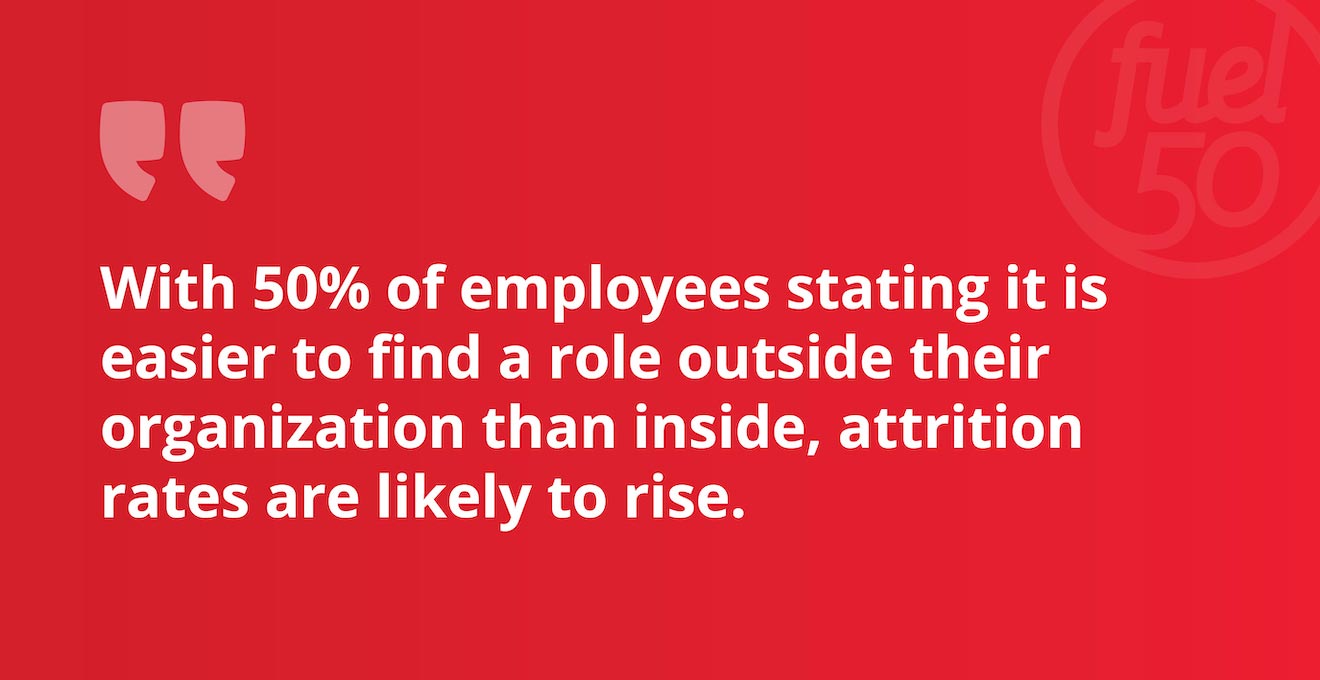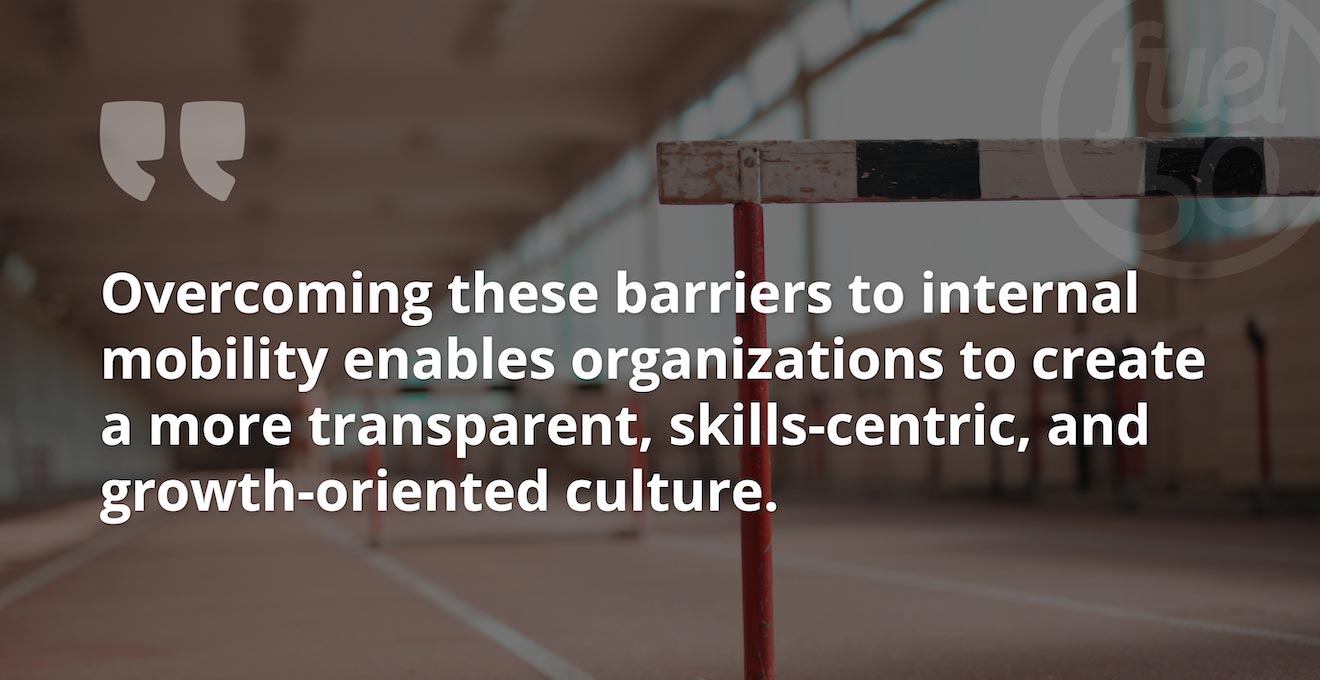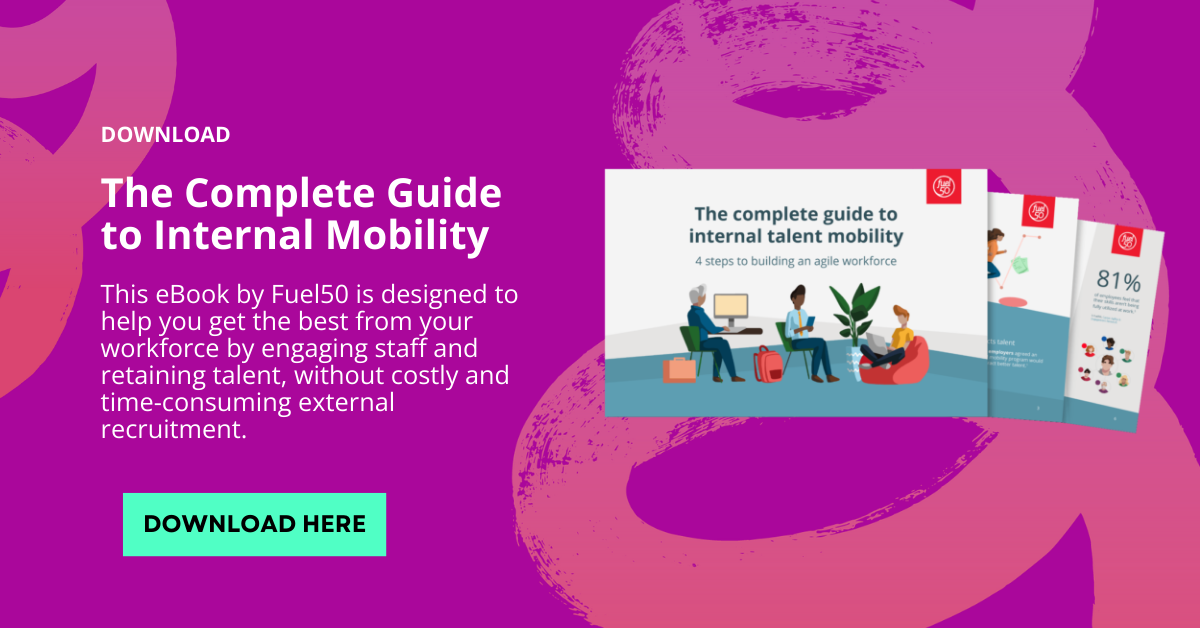Originally published on Forbes. Written by Fuel50 CEO and Founder, Anne Fulton.
With 50% of employees stating it is easier to find a role outside their organization than inside, attrition rates are likely to rise. This highlights a pressing need for organizations to address the top barriers to internal mobility to improve retention and ultimately build a motivated, engaged, and agile workforce.
Here are four top barriers to internal mobility, as highlighted by Fuel50 research, and some actionable suggestions for how to overcome them:
1. An Organizational Culture That Doesn’t Encourage Internal Mobility
Twenty-two percent of respondents say lateral moves are not encouraged in their organization. A significant factor hindering a culture of internal mobility is talent hoarding by leaders and managers.
Solution: Overcoming talent hoarding is imperative. An effective tactic is to provide incentives and recognition for leaders supporting internal mobility statistics or attracting talent into their teams. Encourage leaders to see themselves as talent agents who help employees develop their skills and progress their careers

2. A Lack of Positions for Employees to Move Into
Forty-four percent of respondents stated that their organization lacks positions for employees to move into. Often, when an organization lacks internal positions, there is either little awareness and marketing of new opportunities across the organization, or employees are not frequently directed to or reminded of internal job openings.
Solution: If an organization does not have open vacancies, it is still important to offer opportunities for growth and development. Gigs or short-term projects are effective ways to encourage skill development. Technology such as a talent marketplace can help by matching employees to gigs, projects, mentors, and opportunities based on their skills and interests.
3. Poor Processes for Internal Mobility
Thirty-seven percent of all respondents said their organization lacks effective processes for managing internal mobility. This highlights a distinct problem in how organizations manage, facilitate, and promote internal mobility.
Solution: Organizations with poor internal mobility processes should run focus groups with employees to better understand how internal mobility processes could be improved. These focus groups should explore areas such as:
- Access to information: How easy is finding information about open roles across the organization?
- Ease of application: How easy is applying for open internal positions?
- Ideas for process improvements: How could internal recruitment processes be improved to make them easier and more user-friendly?
4. HR Does not Have Visibility to Talent Bench Strength
Talent visibility is a crucial component of talent mobility. It enables HR to understand what skills are currently within their workforce and what skills are needed for the future of work.
Solution: Implementing technology such as Fuel50’s talent marketplace gives companies full visibility to all the skills and talent at their disposal, with a true line of sight to how work is getting done, by whom, with what skills, performed where, and at what value. This gives organizations an immediate and significant competitive advantage.

Breaking Down Barriers to Internal Mobility
As I learned in my research for my new book, The Talent Revolution, overcoming these barriers to internal mobility enables organizations to create a more transparent, skills-centric, and growth-oriented culture — all crucial components to building an empowered workforce that’s ready for the future of work.








